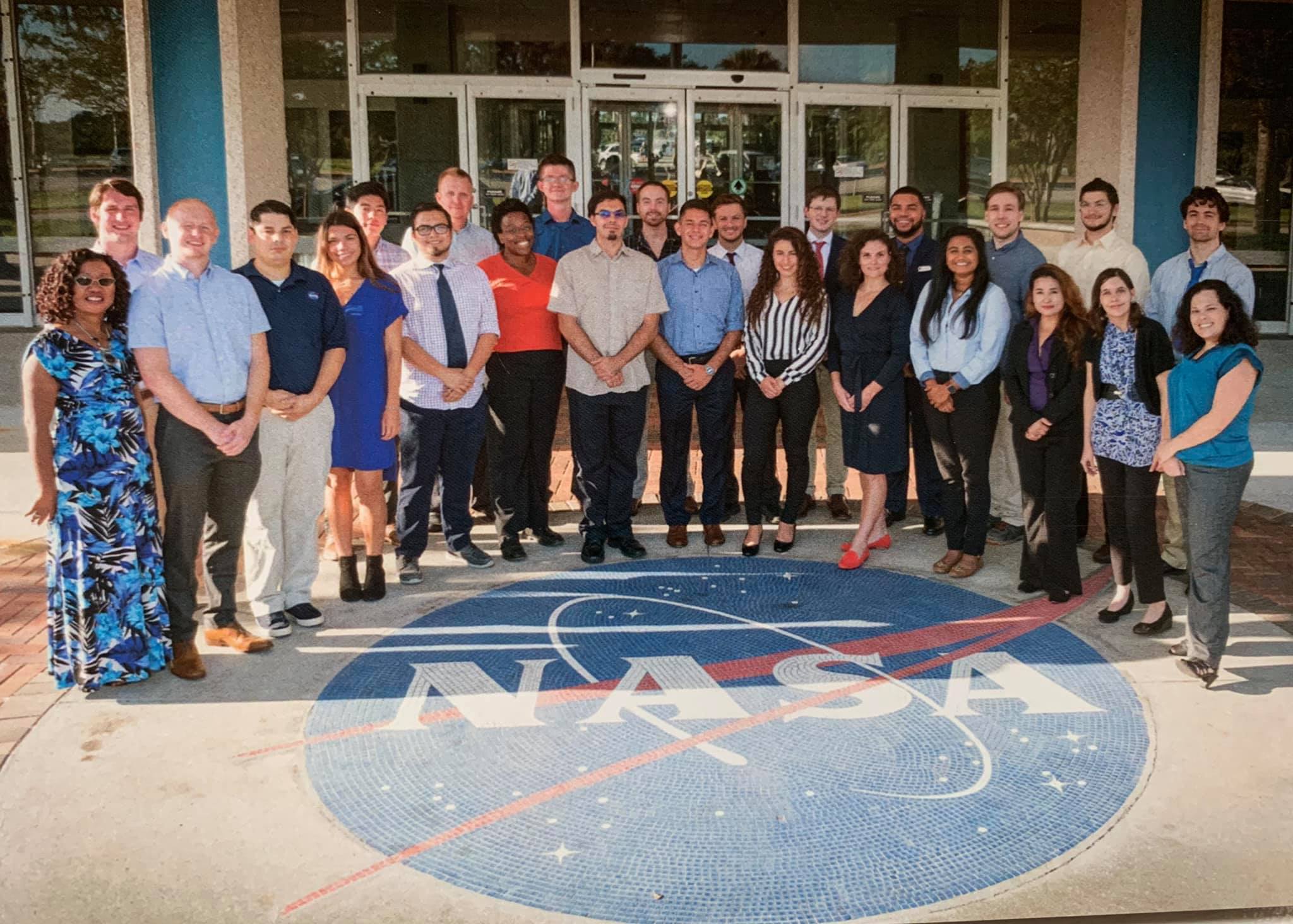NASA Kennedy Space Center August-December 2018
Overview
At the National Aeronautics and Space Administration John F. Kennedy Space Center, I assisted in testing and data analysis of the Restore-L propellant transfer fluid system simulator for evacuation and leak check testing. The goal of the Restore-L project is to send a spacecraft to rendezvous with a satellite in low earth orbit and refuel this satellite with hypergolic fuel. More information regarding this project can be viewed here. I also designed and built a fixture for the tension testing of flexible metal hoses from miscellaneous parts for no cost. Furthermore, I developed testing procedures, carried out the tests and summarized findings in a report for tension and fatigue testing of flexible metal hoses.
Tension Testing of Flexible Metal Hoses
Situation
At NASA there are standard ground processing procedures that the flight flexible metal hoses will undergo and these procedures may impact the ability of the hoses from meeting the minimum mission requirements. During storage, these hoses are held taught and wound around a spool for short term storage. The goal of the tension test is to see if holding these hoses taught during winding may cause any issues in the yielding of the hose or the bradding of the hose itself. There is no non-proprietary information available on the tension loading of flex-hoses leading to a simple tension test in-house being needed.
Task
A testing fixture needed to be created to statically load each flex-hose with weights to test the tensile capabilities of each flex-hose. The test specimen designed for the mounted needed to be a sample of shorter hoses sent from the manufacturer as a sample. Once this testing fixture is created, a tension test procedure needed to be drafted to document and carry out the tension test. Then, the test needed to be carried out and data collected. Next, the results of the test needed analyzing and summarizing to come to a conclusion as to whether or not the flex-hose manufacture could continue in the testing of the full-scale flight flex-hoses.
Action
I designed and built the tension testing fixture out of miscellaneous items around the shop (wooden pallet, foam sheets, rope, clamps, and plexiglass) for no cost. Next, I drafted and developed a procedure to conduct the tension test in the shop to meet the required loading needed and called for in technical drawings. After completing the procedure and gaining approval, I lead the testing of two flex-hoses in a team of three until completion. Once the tests were completed, I decommissioned the sample flex-hoses and began analyzing the test data. From this test data, I was able to draw the conclusion that the flex-hoses maintained their functionality during tension loading. This conclusion and a overview of the entire process was summarized in a report and submitted.
Result
Two sample flexible metal hoses from the manufacturer were tested and deemed safe under tension loading. One more flex-hose will arrive and be tested in the near future in the same manner. The testing structure, procedure and report are prepared for the next intern to conduct the testing of the third flex-hose once it arrives. In addition, I have saved the administration several hundreds if not thousands of dollars conducting the tension test in-house. As a result, NASA was able to receive testing results for no cost by myself and my testing team.
